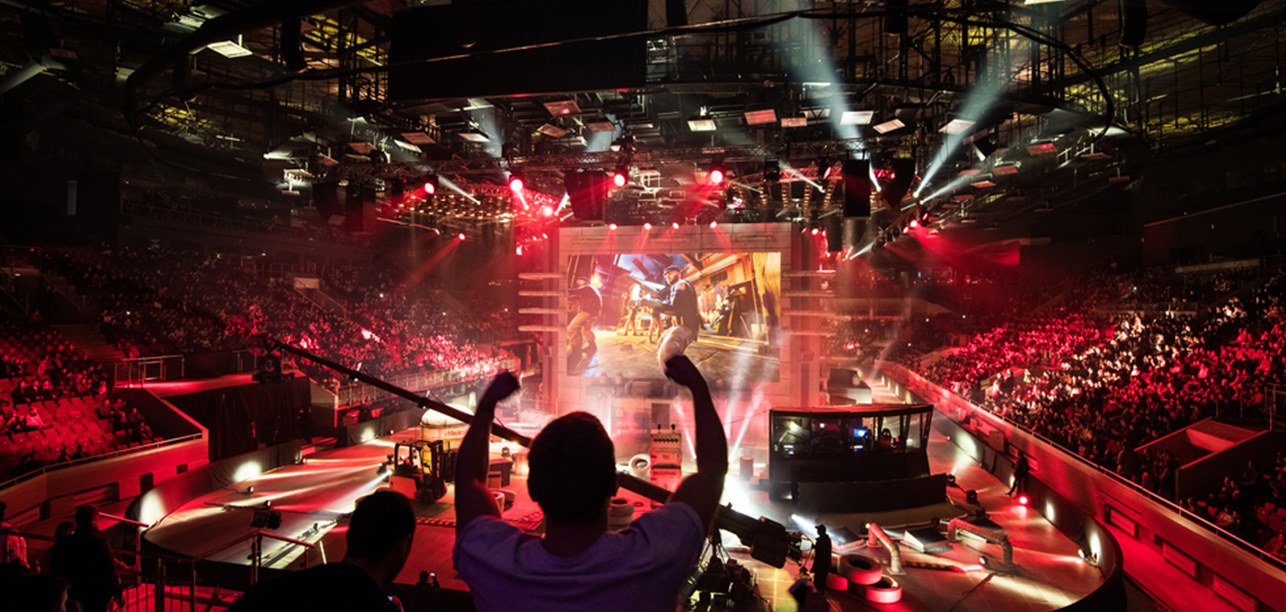
LAN vs. Online Tournaments: Which is More Competitive?
In the dynamic world of esports, the debate between LAN (Local Area Network) and online tournaments is as fervent as ever. Both formats have unique features. Each one brings its own challenges and benefits for players and organisers. But when it comes to competitiveness, which format truly reigns supreme? This blog looks at LAN and online gaming. It compares the two and discusses the pros and cons of online tournaments.
Why the Debate Matters

Asports continue to grow exponentially. Knowing the differences between LAN and online tournaments is key for players, fans, and organisers. Competitive gaming keeps changing, and tournament formats can greatly affect how well players perform and their overall experience. The choice between LAN and online tournaments affects how people view fairness, skill, and the integrity of the competition.
Real-Life Applications
Consider a scenario where a professional esports team is preparing for a major tournament. Choosing between a LAN event and an online tournament can impact training, travel, and strategy. For fans, the format affects how they watch. LAN events create a lively atmosphere. Online tournaments are easier to access and more convenient.
The Key Differences: LAN vs. Online Gaming
To grasp the competitiveness of LAN and online tournaments, we must look at their key differences.
LAN Tournaments: A Closer Look
LAN tournaments are held in a physical location where all participants gather and compete on a local network. This setup fixes many technical issues in online gaming. It helps with latency and connectivity problems. The environment builds camaraderie and fierce competition since players are with their opponents in person.
Advantages of LAN Tournaments
- Stable Connection: The local network ensures minimal lag, providing a seamless gaming experience.
- Atmosphere: The live audience and physical presence of competitors create an electrifying atmosphere.
- Fairness: Equal playing conditions for all participants. Everyone uses the same network and equipment.
Disadvantages of LAN Tournaments
- Cost: Organising a LAN event can be expensive due to venue rental, travel, and accommodation expenses.
- Logistics: It can be tough to coordinate schedules and ensure everyone can travel to the venue.
- Limited Accessibility: Not all players can attend due to geographical and financial constraints.
Online Tournaments: A Digital Frontier
Online tournaments let players compete from anywhere. They connect through the internet. This format is now very popular. This is mainly due to global connectivity and new technology.
Advantages of Online Tournaments
- Accessibility: Players from around the world can participate without the need for travel.
- Cost-Effective: Saves money for organisers and participants. There are no travel or accommodation costs.
- Flexibility: Easier to schedule and organise, accommodating players’ diverse time zones and commitments.
Disadvantages of Online Tournaments
- Connectivity Issues: Internet latency and network disruptions can impact performance and fairness.
- Lack of Atmosphere: The absence of a live audience and physical presence can diminish the competitive intensity.
- Potential for Cheating: The remote nature makes it harder to monitor and prevent dishonest practices.
Competitiveness: A Comparative Analysis

When evaluating the competitiveness of LAN vs. online gaming, several factors come into play. LAN tournaments offer a level playing field and an immersive atmosphere. Online tournaments provide unmatched accessibility and convenience. The competitiveness of each format largely depends on the perspective of players, organisers, and fans.
Skill and Performance
LAN tournaments are often perceived as the pinnacle of competitive esports. This is due to the controlled environment and reduced technical issues. Players can focus solely on their gameplay without worrying about connectivity problems. Opponents in front of players create more psychological pressure. This tests their mental strength and ability to adapt.
Online tournaments make players adjust to different network conditions and possible lag. This tests how well they perform in tough situations. It shows their versatility and problem-solving skills.
Viewer Experience
The live atmosphere of LAN events offers an unparalleled viewing experience. The crowd’s energy, players’ reactions, and real-time interactions make a show that’s hard to match online. Online tournaments provide the convenience of watching from anywhere. It attracts a broader audience and increases viewership numbers.
Expert Tips & Common Mistakes to Avoid
Players and organisers in esports tournaments must grasp the details of each format. Here are some expert tips and common mistakes to avoid:
Expert Tips
- Preparation: Whether participating in a LAN or online tournament, thorough preparation is key. Familiarise yourself with the format, rules, and potential technical challenges.
- Adaptability: Be ready to adapt your strategy based on the format. LAN events may require more focus on mental resilience. Online tournaments demand adaptability to network conditions.
- Engagement: For organisers, making engaging content and being open can improve the experience for players and viewers.
Common Mistakes
- Logistics Matter: For LAN events, not planning for travel and accommodation can cause stress and problems.
- Neglecting Technical Setup: In online tournaments, overlooking the importance of a stable internet connection and proper equipment can hinder performance.
- Engaging the audience is key for both formats. Use live streams, social media, and interactive content to connect better.
Advanced Insights & Expert Recommendations
As the esports industry continues to evolve, the choice between LAN and online tournaments will remain a topic of discussion. Experts agree that using both formats is key. Each format has its own strengths, so we should take advantage of them.
Embracing Hybrid Models
Many organisers are now exploring hybrid models that combine elements of LAN and online tournaments. This method combines the best of both worlds. It provides the exciting feel of LAN events and the easy access of online competitions. Hybrid models can cater to diverse audiences and provide a more inclusive competitive environment.
Future Trends
The future of esports tournaments will likely include more technology. We can expect virtual reality and augmented reality to improve the competitive experience. As technology moves forward, LAN and online tournaments may combine. This could open up fresh chances for innovation and growth.
The Future of Esports Competition

In the debate of LAN vs. online tournaments, there is no definitive answer as to which is more competitive. Each format offers unique advantages and challenges. The choice ultimately depends on the goals and preferences of players, organisers, and fans. Knowing the differences between LAN and remote esports helps stakeholders. By looking at the pros and cons of online tournaments, they can make smart choices. This improves the competitive scene.
Players and teams can find more success by embracing both formats. They should also work on their skills in different environments. This helps them adapt better. Organisers can use hybrid models and technology to make tournaments more inclusive and engaging. The esports industry is growing fast. This means new chances and exciting changes for everyone involved.
What are your thoughts on the competitiveness of LAN vs. online tournaments? Share your experiences and insights in the comments below!


